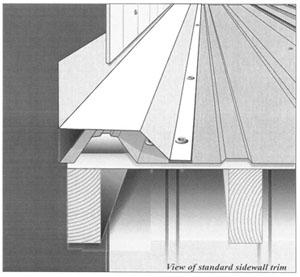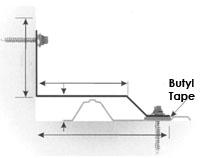End Wall Flashing
End-wall flashing is applied where the upward slope of a roof meets a wall. The wall side of the flashing can be covered with siding or counter-flashing, and outside closures are necessary to seal between the flashing and the panel. Specify which trim piece is needed and the roof pitch when ordering.
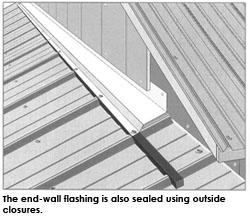
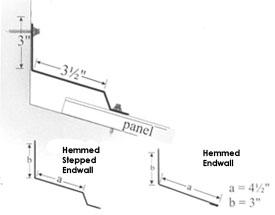


Transition Flashing
The transition flashing prevents leakage at the point where two different roof pitches meet. It must be sealed on the lower side with outside closures, and can be sealed underneath the upper panels with inside closures. The similar gambrel flashing is used where the lower pitch is steeper than the upper.

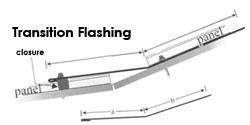


Gable Flashing
Gable flashing is used to trim the edge of the roofing panel at the gable end of the roof. It should match the eave drip that extends along the drip edge of the roof. If the panel is allowed to hang over the gable end, eave drip can be used instead. Butyl tape between the trim and panel eliminates leaks.

Sidewall Flashing
Sidewall flashing is applied when the side of the roof butts up against an adjacent wall. The wall-side of the flashing can either be covered over with siding or sealed with caulk. Butyl tape should be applied where the “foot” of the flashing attaches to the roof.
